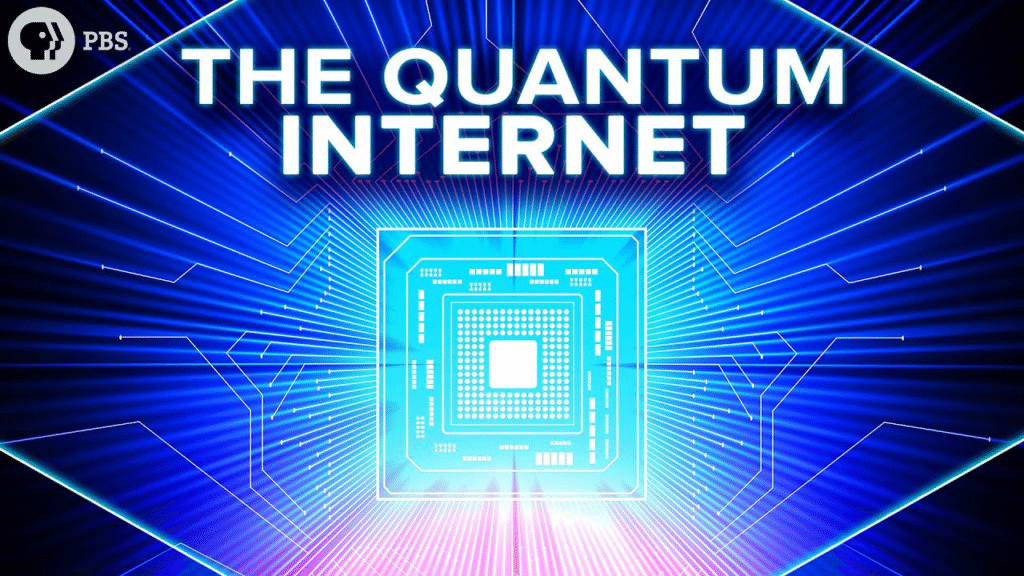The internet as we know it may soon evolve into something far more secure, powerful, and mind-bending. In 2025, researchers and governments around the world are racing to build the Quantum Internet — a next-generation communication network based not on classical signals, but on the strange laws of quantum physics.
This isn’t just a theoretical concept. From pilot networks in Europe to satellite-based quantum links in China, the infrastructure for quantum connectivity is already being laid. Here\’s what it all means, and why the world is paying attention.
What Is the Quantum Internet?
The Quantum Internet is a new type of network that uses the principles of quantum mechanics — particularly quantum entanglement and superposition — to transmit data. Unlike traditional networks that send bits (0s and 1s), quantum networks transmit qubits, which can exist in multiple states at once.
This allows for capabilities that are impossible with classical internet, such as:
- Unhackable communication using quantum key distribution (QKD)
- Ultra-fast data sharing between quantum computers
- Distributed quantum sensing and timekeeping
How Does It Work?
At the core of the Quantum Internet is entanglement — a phenomenon where two particles become linked in such a way that the state of one instantly determines the state of the other, no matter how far apart they are.
Quantum routers and repeaters are used to create “entangled” nodes across a network, allowing secure information to be shared without being physically transmitted in the traditional sense. If a third party tries to intercept the message, the quantum state collapses — immediately revealing the presence of an intruder.
Source: Scientific American, April 2025
Recent Breakthroughs in 2025
This year has seen several major milestones in quantum networking:
- China’s Micius satellite completed its first intercontinental QKD session with a partner lab in Europe
- The U.S. Department of Energy launched a 300-mile quantum testbed across Illinois and Indiana
- India’s first quantum communication link between Mumbai and Pune became operational in March 2025
Meanwhile, the EU’s Quantum Flagship initiative is rolling out entanglement-based encryption for critical infrastructure across key cities like Vienna, Paris, and Amsterdam.
What Will It Be Used For?
The Quantum Internet isn’t designed to replace the classical internet, but to complement it for high-security and high-performance tasks. Potential applications include:
- Military-grade secure messaging and defense communications
- Financial transactions protected against quantum hacking
- Quantum cloud computing where qubits can be shared remotely
- Medical data transmission with zero risk of interception
Eventually, ordinary users could benefit from enhanced cybersecurity baked into their devices — without even knowing the backend is powered by quantum tech.
Challenges and Limitations
Despite the excitement, there are major hurdles to overcome:
- Distance limits: Entangled particles are fragile and difficult to maintain over long ranges
- Hardware complexity: Requires cryogenic temperatures and precise quantum detectors
- Standardization: No global protocol for quantum internet infrastructure yet exists
But progress is steady. Tech giants like Google, IBM, and Toshiba, along with universities like MIT and the University of Tokyo, are working on next-gen quantum repeaters and scalable qubit platforms.
Conclusion
Once a sci-fi concept, the Quantum Internet is now becoming reality. In 2025, the foundation for a secure, ultra-fast global communication system is already being built — one that could redefine how we connect, protect, and process information.
While mainstream adoption may still be a decade away, the Quantum Internet is no longer a question of “if” — but “when.” And when it arrives, it could transform cybersecurity, science, and society as we know it.





Hi,
Kudos on acquiring 5min-read.in! It’s always exciting to begin a new online adventure.
In line with our initiative to assist new domain owners, I’m getting in touch with a valuable resource for 5min-read.in.
I’m talking about our the Google Maps Lead Collector – a Chrome extension that helps you locate local businesses in your area.
I’ve put together a quick video that demonstrates how it works:
https://www.youtube.com/watch?time_continue=20&v=1Dd7i4vNgu0
This complimentary tool enables you to:
Instantly download targeted business leads
Find prospects in particular industries
Streamline your prospecting
Launch your business immediately
You’ll get 50 leads per search with no restrictions on the number of searches!
Download your free copy from the video description.
https://www.youtube.com/watch?time_continue=20&v=1Dd7i4vNgu0
Here’s to your success with 5min-read.in! Don’t hesitate to reach out with any queries.
Best regards,
Roslyn Donley
Online Marketing Expert
Dear 5min-read.in Owner,
Excited to see 5min-read.in live!
As you embark on your journey with 5min-read.in, building an engaged audience is probably on your mind. My name is Jorge, and I’m reaching out to invite you to our exclusive early adopter program for a new private community building and engagement platform.
Our tool enables you to establish a branded, private hub where your audience can interact, share content, and connect. The platform also supports selling memberships, hosting various types of events, and other valuable features. Picture a dedicated community space, similar to a Facebook Group, but without the usual clutter and noise.
For 10 new website owners, we’re granting free lifetime accounts (typically $690/year). All we ask in return is your active usage of the tool and your honest feedback to guide our improvements.
If this sounds interesting, simply respond to this message – I’m eager to connect!
Sincerely,
Jorge Bugden